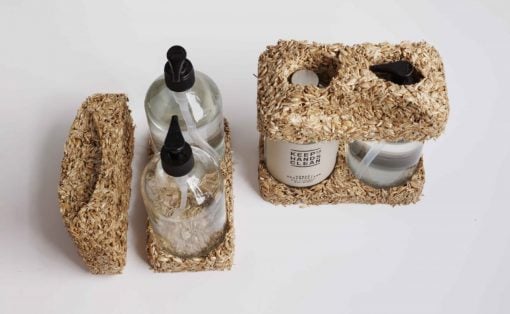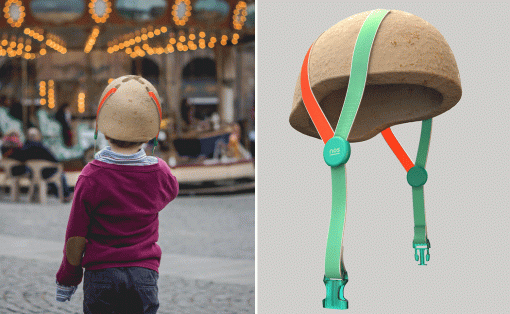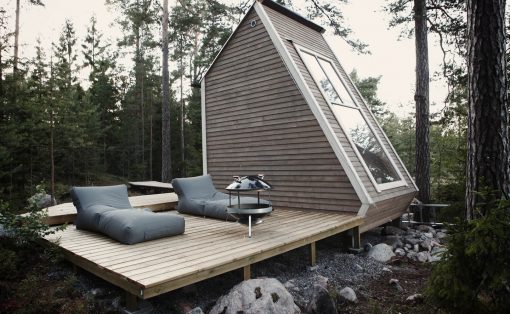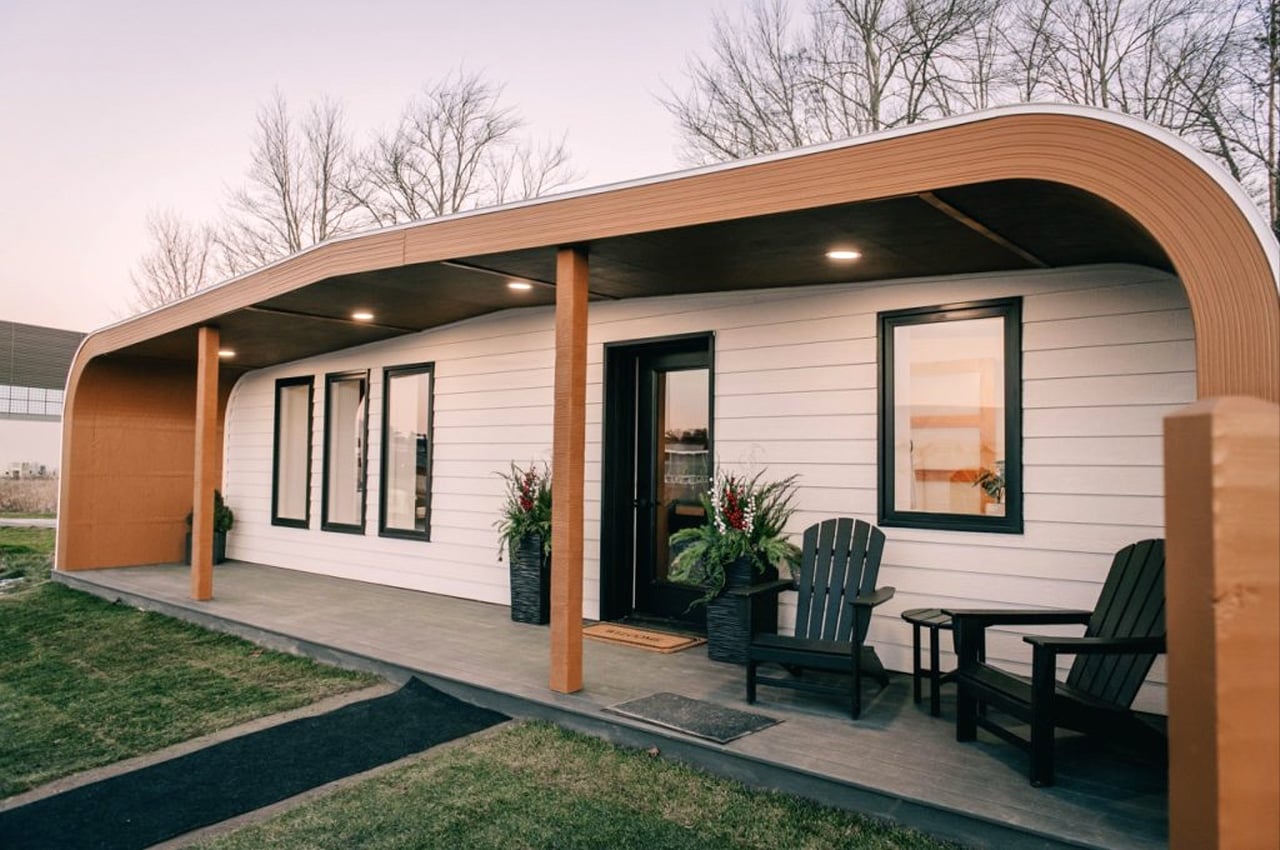
There’s something about wooden architecture that is simply so humble and endearing. Wood has been a material of choice for construction for ages galore. Wood ages beautifully – anything built with wood will retain the character of your house. And it also manages to incorporate an aura of warmth and serenity within the living space. The rustic and homely appeal of a wooden space instantly makes you feel at ease and welcome. It’s a material of choice that has stood strong through the ages and continues to do so. Whether modern or traditional, wood can be bent and molded to create a living space of your choice and style. From a tiny timber home with a biophilic design to the world’s first 3D-printed home that happens to be wooden – this collection of architectural designs will leave you mesmerized and completely in awe of the wonderful yet simple material that is wood!
1. The BioHome3D
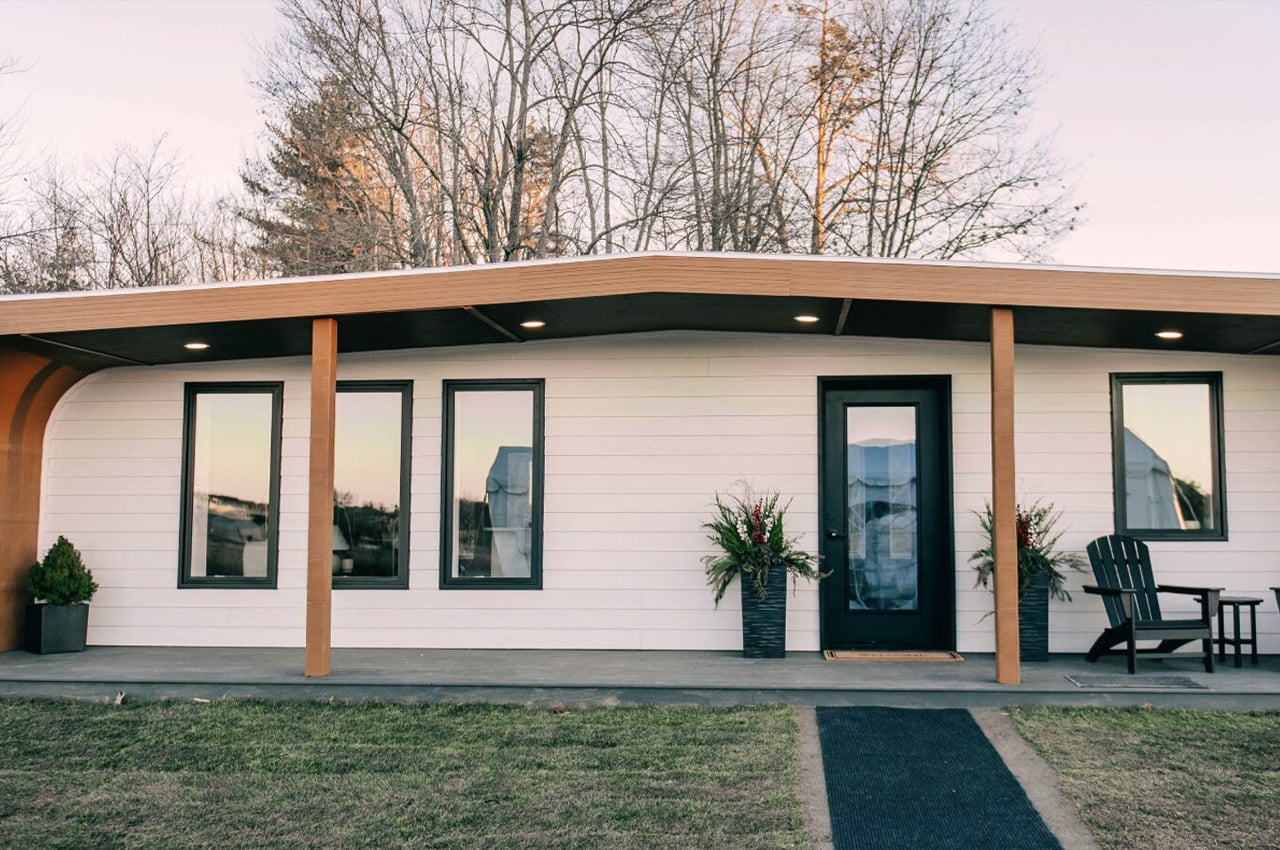
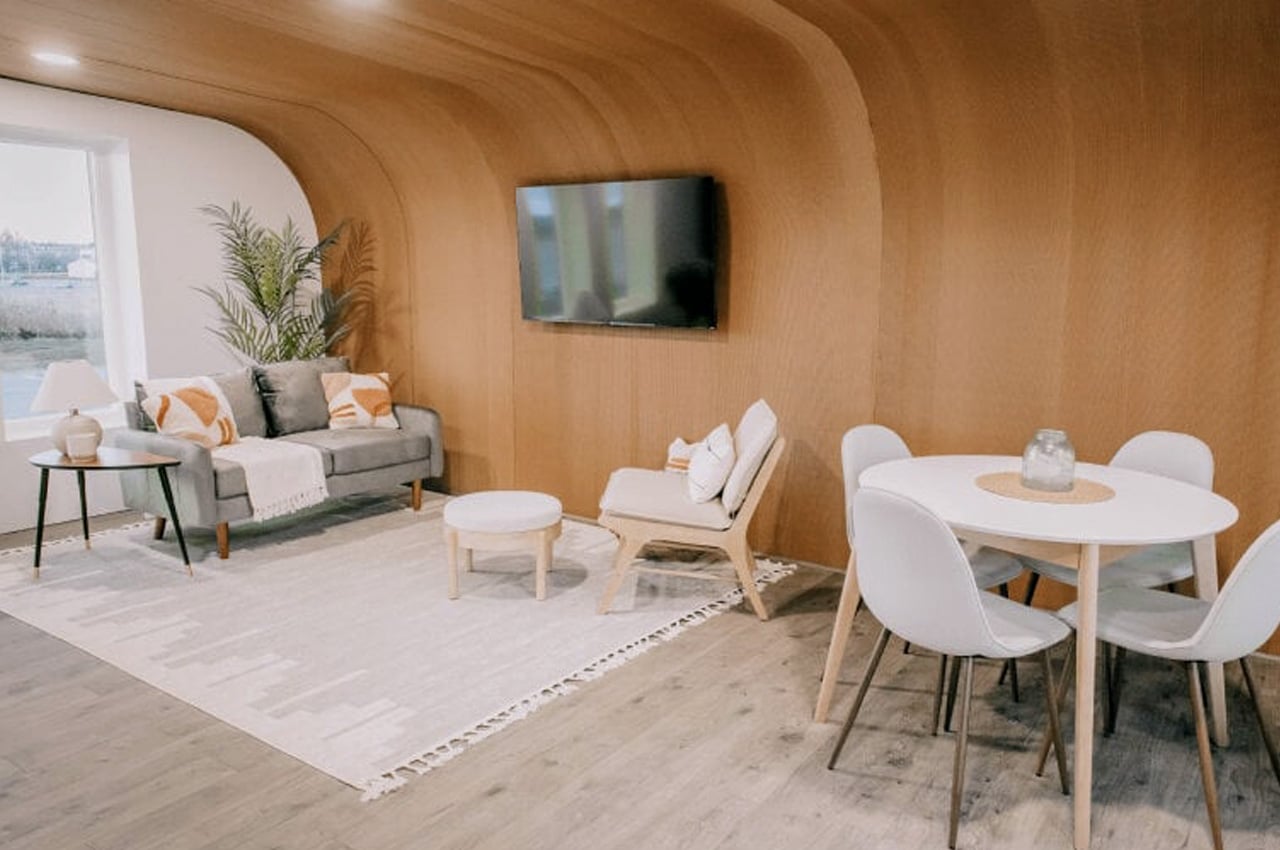
The University of Maine Advanced Structures and Composites Center (ASCC) created the world’s first 3D-printed home built completely from bio-based materials such as – wood flour or fine sawdust, mixed with a binder made from corn.
Why is it noteworthy?
Called the BioHome3D, the home was specially designed to address labor supply chain issues that are raising the costs of homes and reducing the availability of affordable housing. The technology used to build the BioHome3D ensures that the home is primarily manufactured off-site using automation, which leads to less time being needed for off-site3 building and setting up the home.
What we like
- Tackles the issue of labor shortage and supply issue
- 3D-printed
What we dislike
- No roof space to allow for vertical growth
2. The Slope House
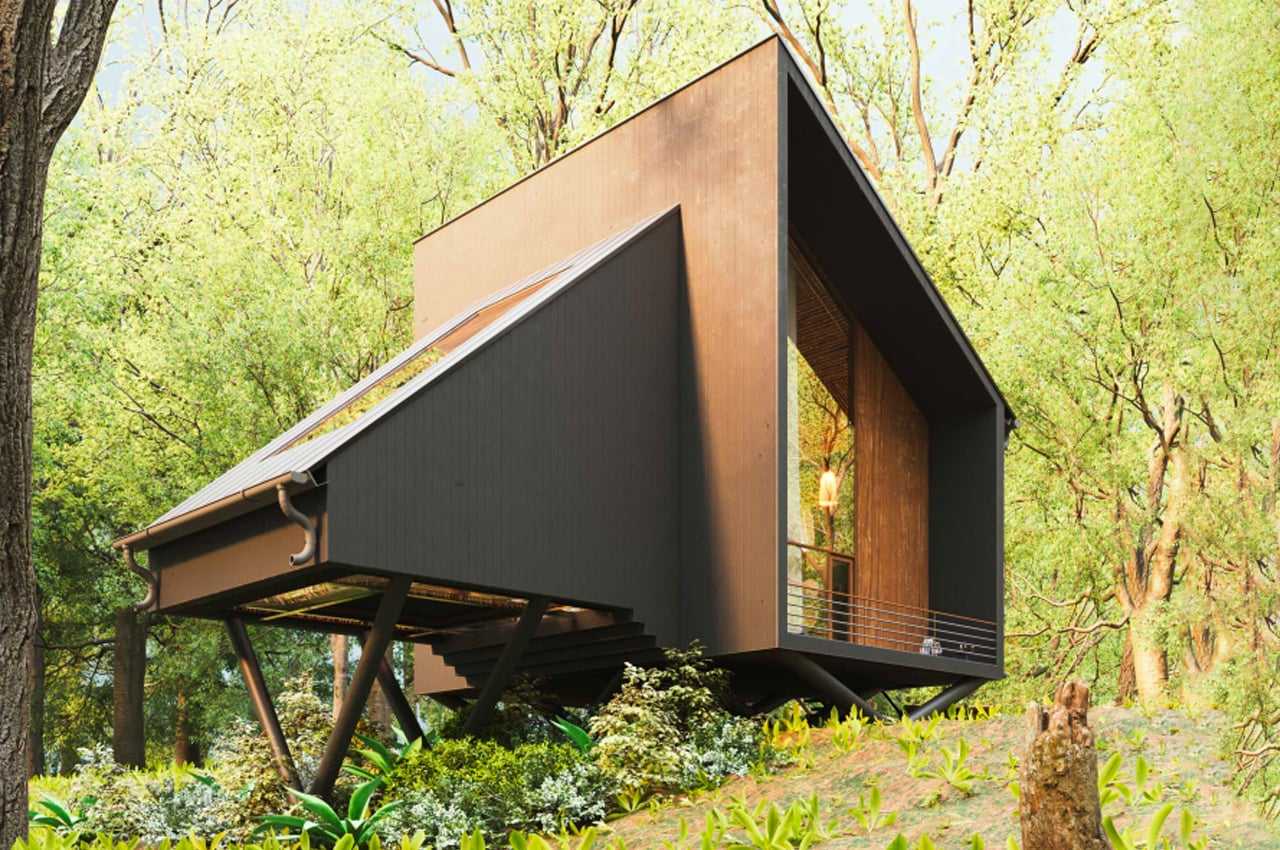
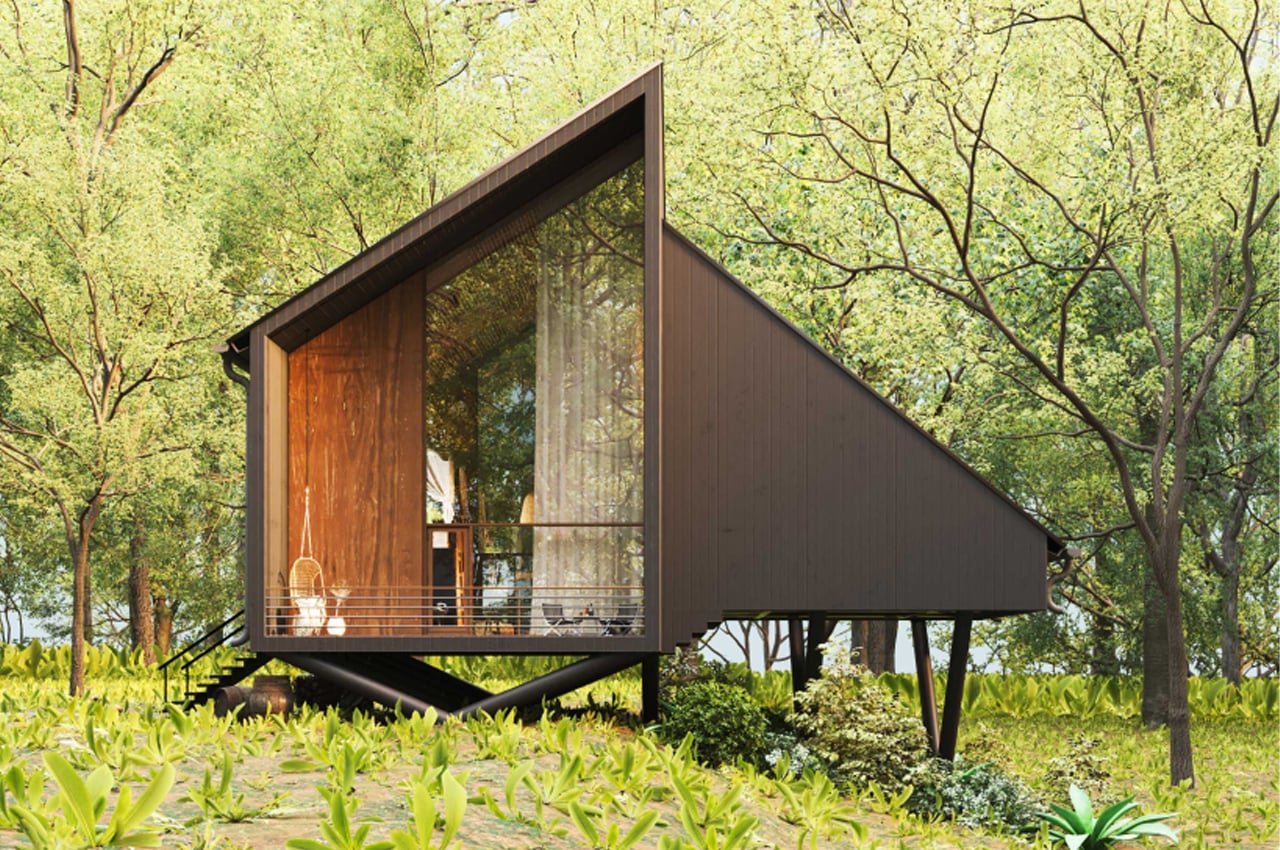
The Slope House from the 3D visualizer Milad Eshtiyaghi is an untraditional A-frame cabin that employs a biophilic design inside and out. 3D visualizer and international architect Milad Eshtiyaghi has long been drawn to escapist hideaways perched on rugged, seaside cliffs and isolated cabins envisioned beneath the Northern Lights. Today, he turns his gaze to tiny cabins. A bit more quaint than treacherous, Eshtiyaghi’s latest 3D visualization finds an angular, timber cabin nestled atop an idyllic hillside somewhere in the rainforests of Brazil.
Why is it noteworthy?
Dubbed the Slope House, the timber cabin maintains a signature triangular frame that’s a thoughtful twist on the conventional A-frame cabin. Defined by two modules, one internal volume hosts the cabin’s bedroom while the other keeps the home’s main living spaces, like the dining area, kitchen, and den. The tiny cabin from Eshtiyaghi is envisioned propped atop a truss system that was specifically chosen to minimize the home’s impact on the preexisting landscape.
What we like
- A biophilic design style has been integrated into the cabin’s interior spaces
- Natural plants have been added inside the house as a small garden
What we dislike
- The theme and form of the home may be a bit too eccentric for some
3. The Trakt Forest Hotel
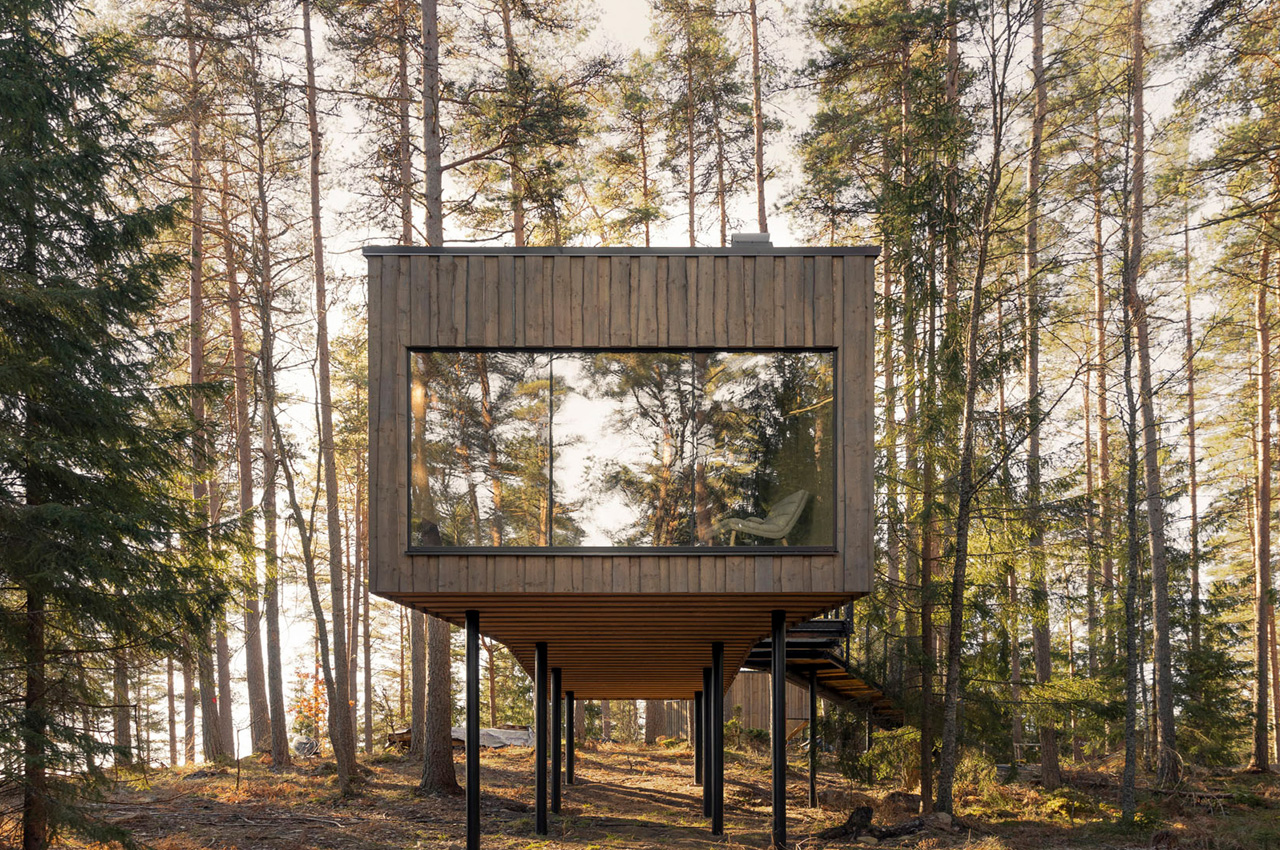
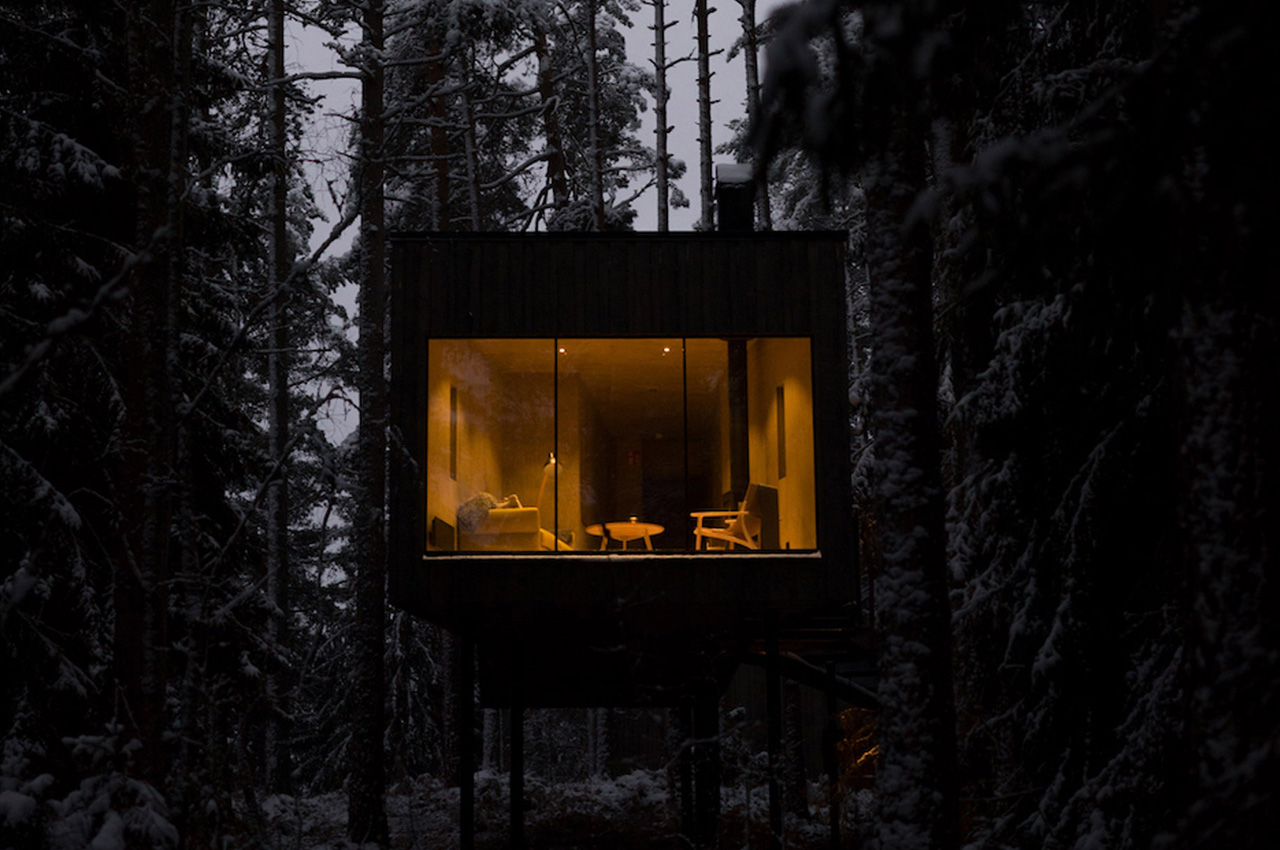
Swedish architecture studio Wingårdhs designed a collection of five quaint suites for the Trakt Forest Hotel in Småland. Supported by five metal stilts, the suites allow the visitors to feel as if they’re chilling amongst the tree canopy! Designed to “put nature in focus”, the cabins are accompanied by a restaurant and sauna in the complex, and they’re all connected via narrow woodland paths.
Why is it noteworthy?
While building the cabins, the studio wanted to create minimal disturbance to the surrounding landscape, and hence they positioned the suites on steel columns placed on concrete plinths. The cabins were constructed using locally-grown wood.
What we like
- Let’s you chill amongst the tree canopy
- Constructed using locally sourced wood
What we dislike
- Deserves a gallery/balcony to improve the experience
4. The Hermitage Cabin
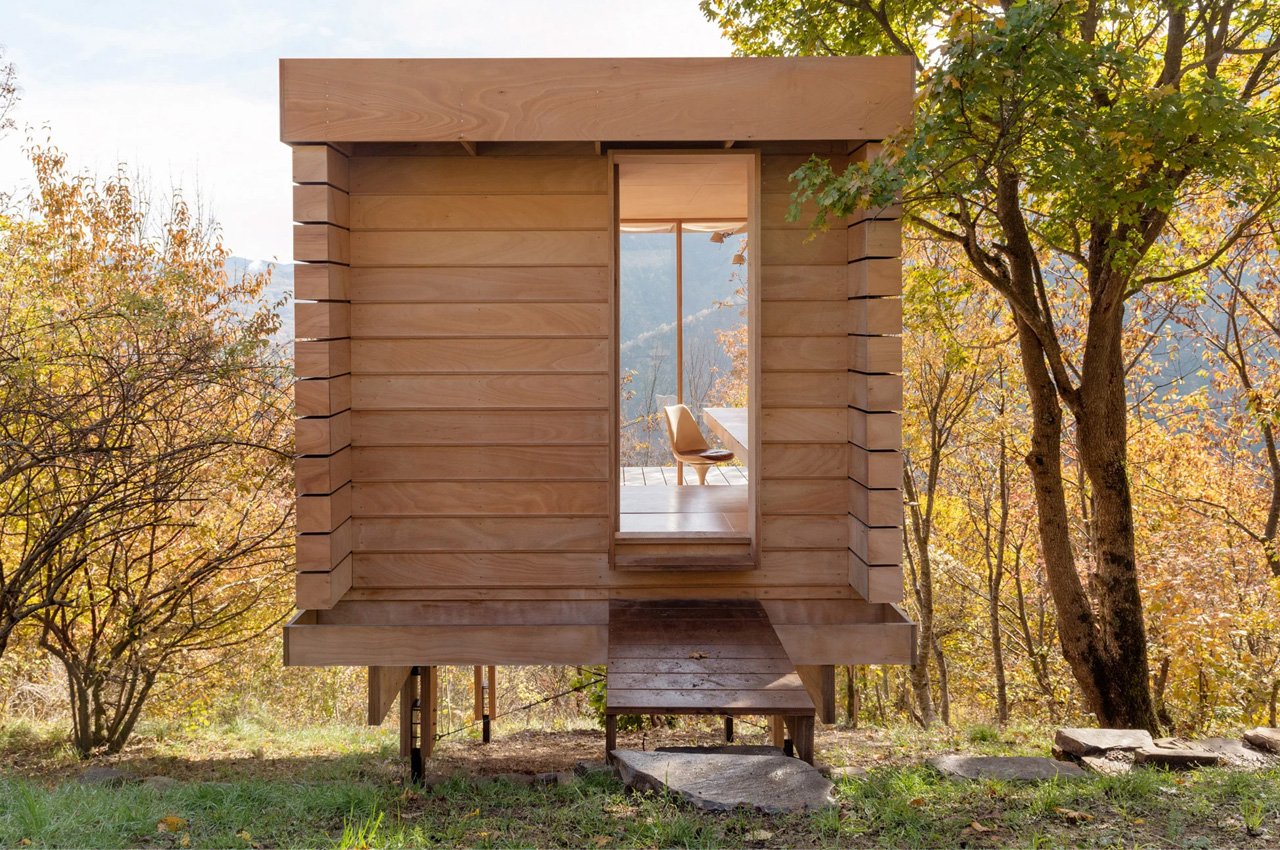
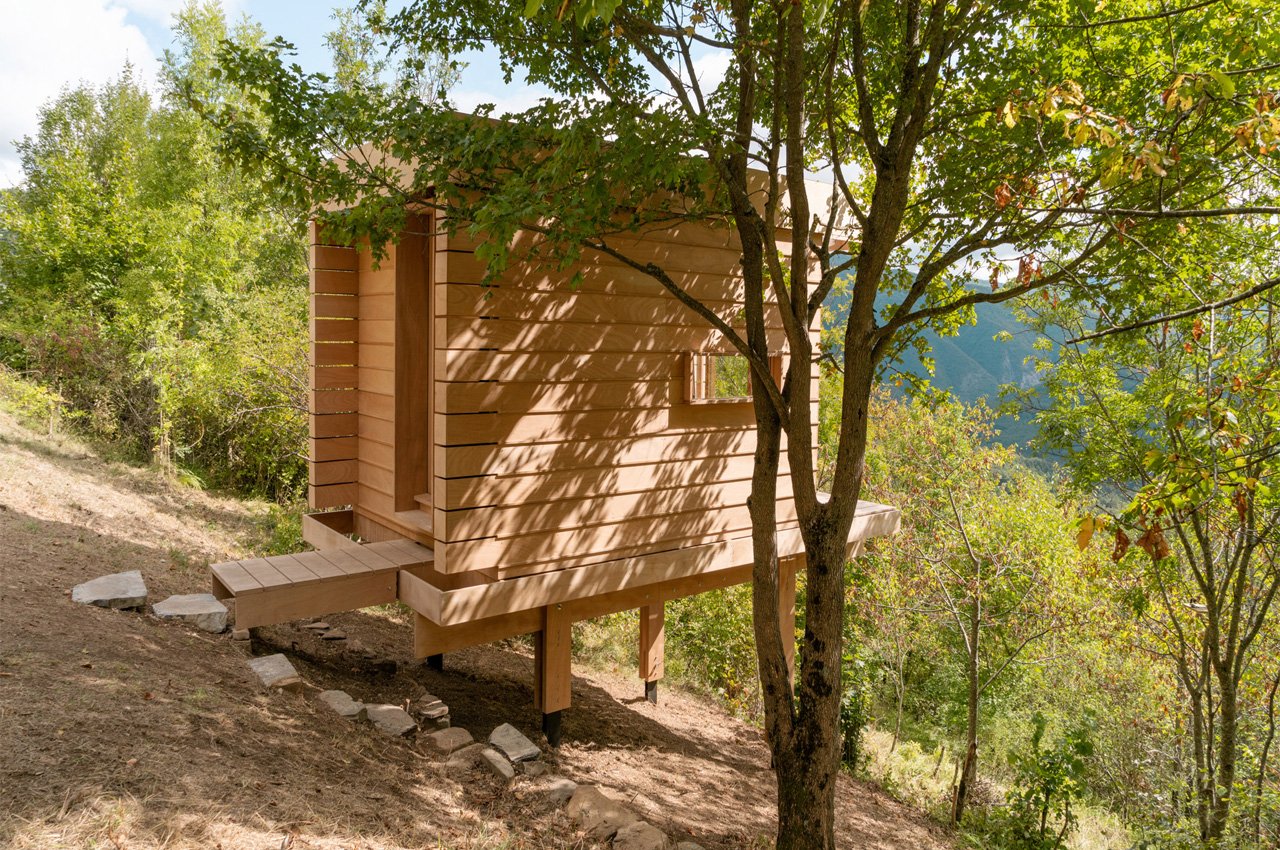
Positioned on the edge of a hill, surrounded by the Apennine Mountains, and overlooking the Trebbia Valley near Genoa, is a minimal off-grid cabin called the Hermitage Cabin. This beautiful wooden cabin was built for “contemplation and introspection”, and occupies only 12 square meters. It can function as a secluded little home or even a cozy yoga retreat!
Why is it noteworthy?
Italian architecture studio Llabb drew inspiration from Scandinavian cabins and Japanese teahouses while designing the Hermitage. The cabin is raised on four wooden and steel supports, which stand on a base of sandstone beds. It features an intriguing modular form created from Okoume marine plywood in Llabb’s carpentry workshop!
What we like
- Inspired by Scandinavian cabins and Japanese teahouses
- Creates a minimal impact on the land
- Doubles up as a yoga retreat
What we dislike
- Can be considered a small space for a yoga retreat
5. Find Sanctuary
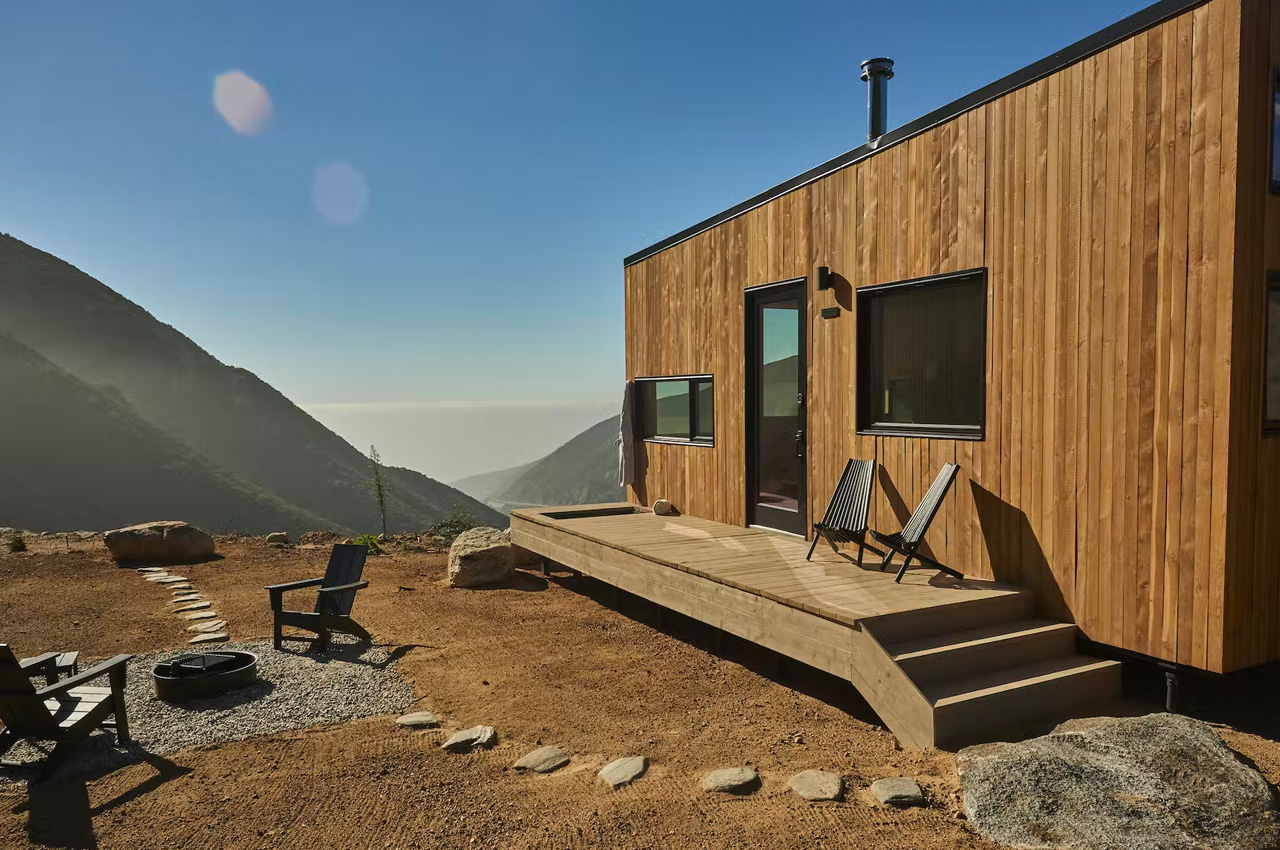
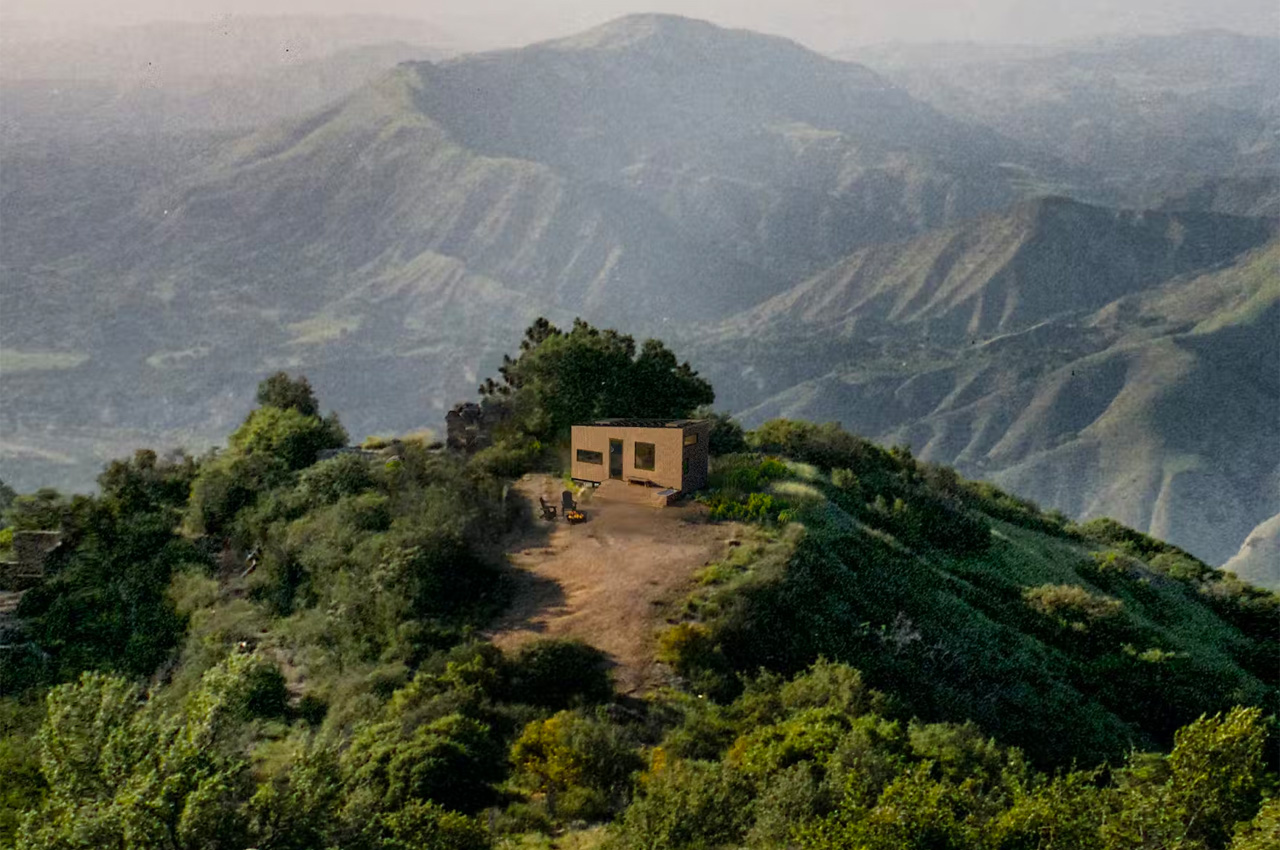
Charlie Hammond spent years working in London’s start-up culture, which led him to feel perpetually exhausted and stressed. He knew he needed to get away from the hustle and bustle of the metropolitan city, and he finally zoned in on the West Coast. He moved to Los Angeles since it provided not only the comfort of a big city but also quiet access to nature. His time in LA, and the peace of mind he acquired there, inspired him to provide a similar experience to other frazzled workers!
Why is it noteworthy?
Hammond then brought to life his idea, ‘Find Sanctuary’. Find Sanctuary is a renewed and revamped version of remote working. It includes a collection of 40 tiny cabins in Big Bear, California that can be rented, providing exhausted employees with an opportunity to work in a peaceful environment, and regain some of their composure.
What we like
- Amped with stunning views of the surrounding mountains
- The wooden cabin has been equipped with high-speed WiFi, and a built-in desk with a stunning view as well, to make your workday efficient and serene
What we dislike
- It’s not released yet!
6. The Water Cabin
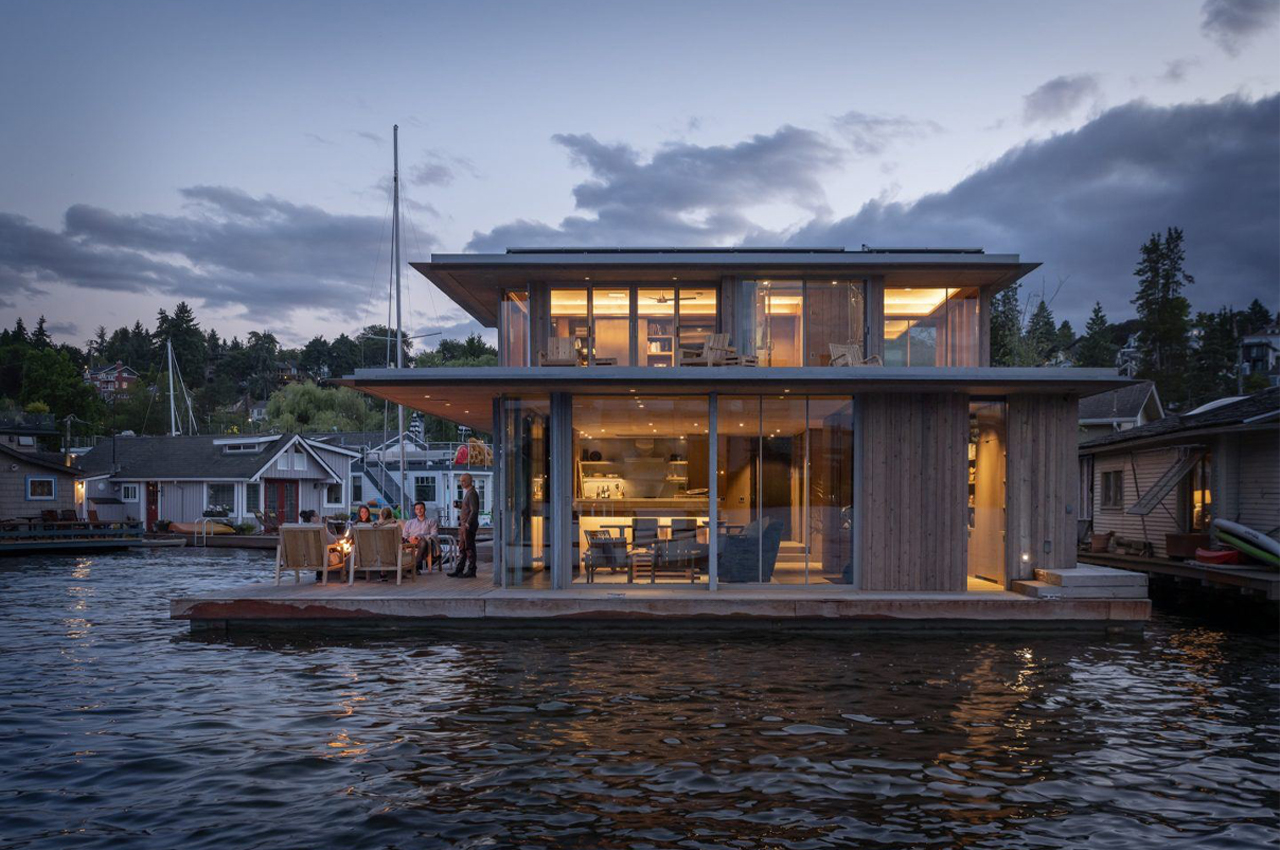
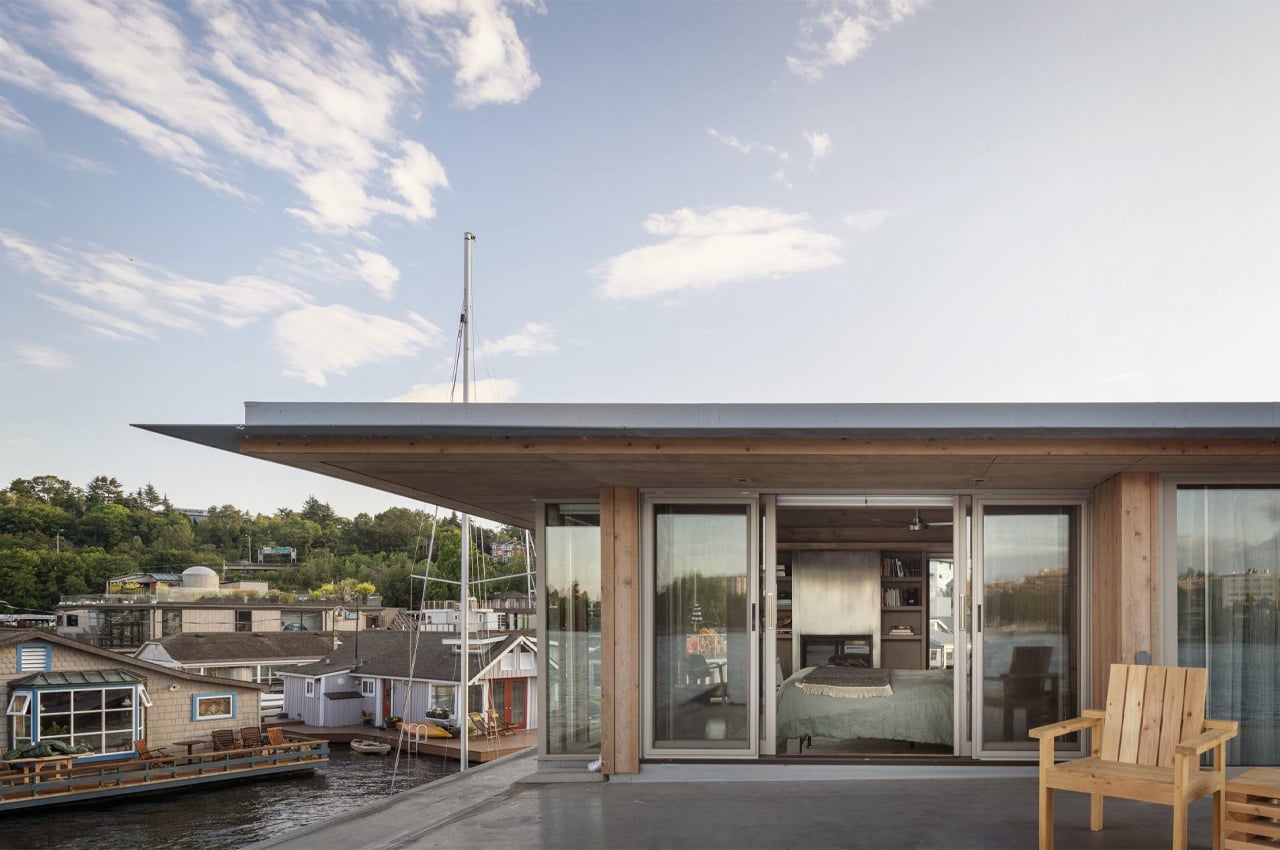
The Water Cabin is a floating home in Seattle’s Portage Bay that maintains the houseboat’s classic nautical personality and the weathered coziness of a cabin.
Why is it noteworthy?
Defined by a geometric silhouette that exhibits Kundig’s classic style, the Water Cabin’s frame is supported by galvanized steel structures that cradle spacious roof planes and wooden decks. Building the Water Cabin, Olson Kundig and their client hoped to blend interior and exterior spaces throughout the home. Arranged over two levels, the home’s interior spaces are specifically configured to maximize connections to the marine environment.
What we like
- Russian birch plywood ceilings line each room overhead, capturing the natural sunlight of the day and brightening the home
- Large roof overhangs protect the patio’s wood from seasonal elements
What we dislike
- Only a hidden murphy bed functions as the home’s guest room
7. The Bookworm Cabin
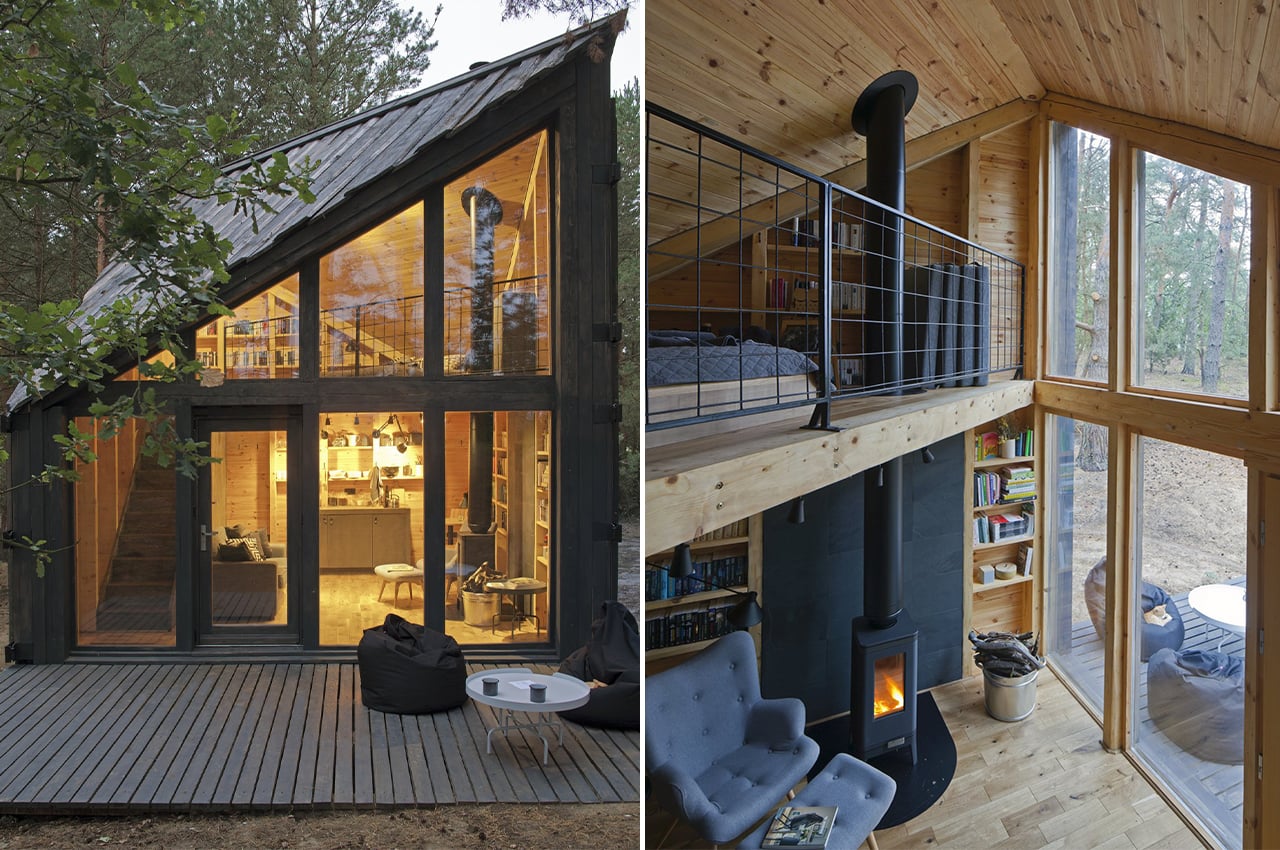
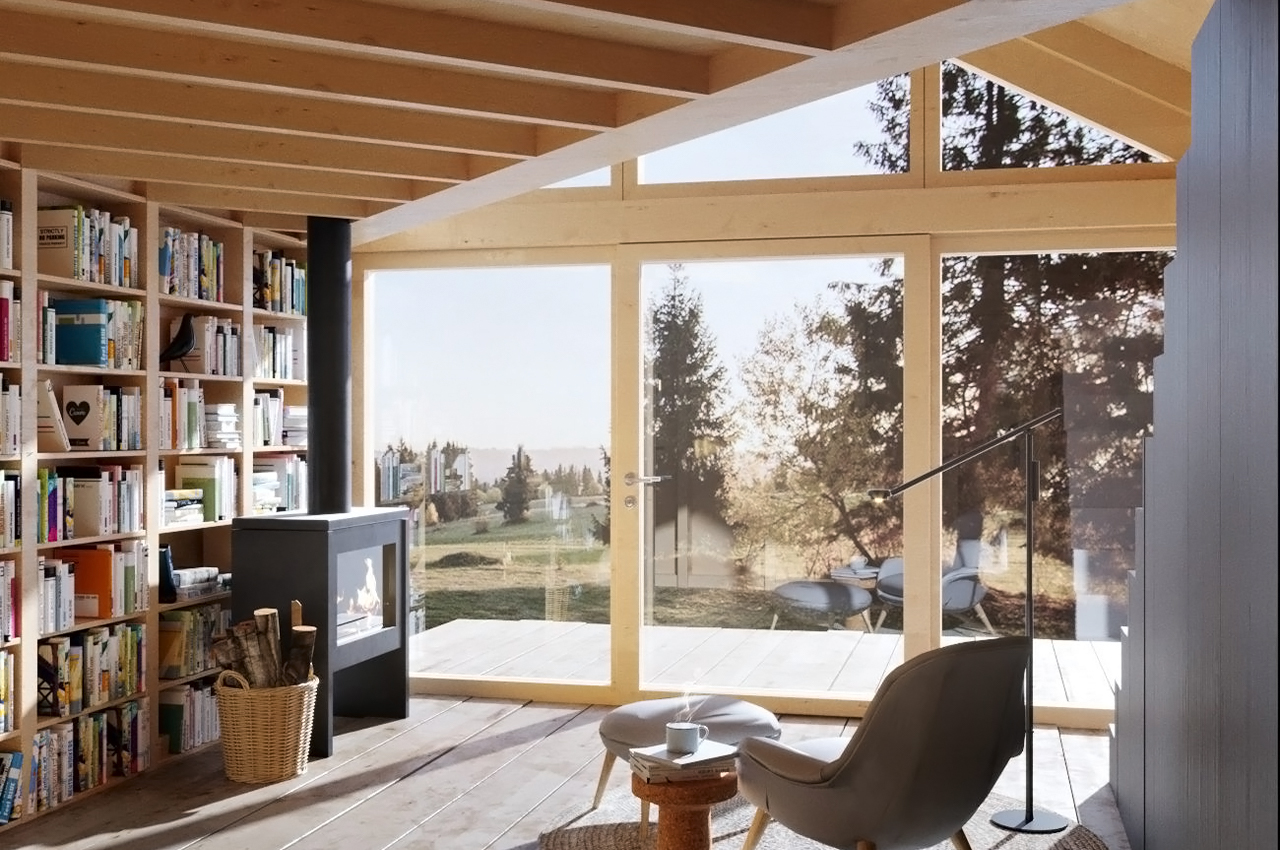
Libraries are one of my happy places so this cabin is straight out of my dream – a cozy personal library blended with a forest getaway! The Bookworm cabin is made for bibliophiles who want to enjoy the peace and quiet of nature while devouring stories by a fireplace. Designed by Polish duo Bartłomiej Kraciukand and Marta Puchalska-Kraciuk, this cabin is all about immersing yourself in your books and the woods which was their personal motive too!
Why is it noteworthy?
The angular 377-square-foot cabin is built on a wooded plot near the town of Mazovia which is just 31 miles outside Warsaw. The design and aesthetic were inspired by the surrounding lush forest and sand dunes.
What we like
- Heaven for book lovers
- Keeps the focus on your reading list or the scenic outdoors thanks to its sweeping glass windows
What we dislike
- Does not feature a fully equipped kitchen
8. Adraga
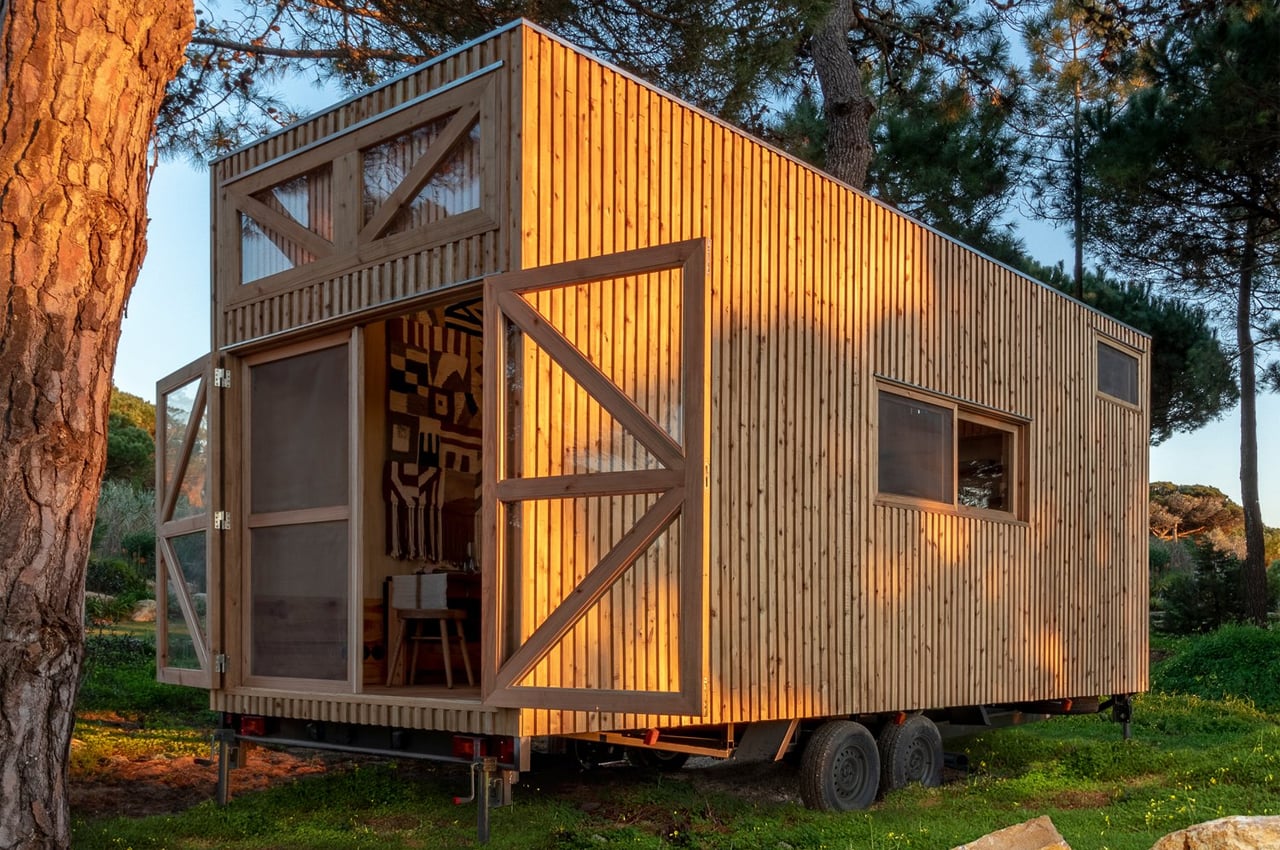
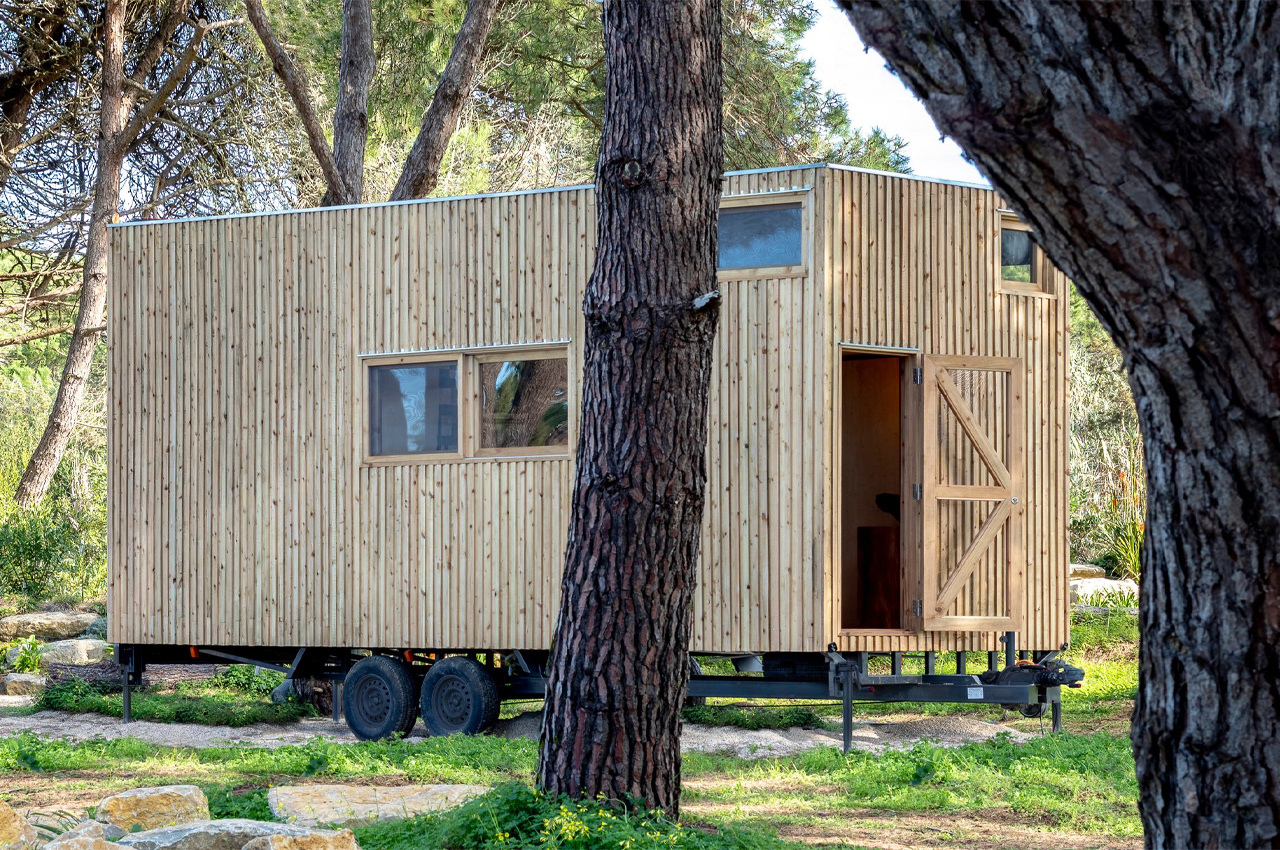
Called Adraga, the tiny home features an array of sustainability elements including solar panels, rainwater collection, and composting garden beds. As part of a larger series of tiny home on wheels, Adraga is home to a retired couple who just want to disconnect from the busyness of the world.
Why is it noteworthy?
Looking at Adraga from the outside, its unstained pinewood facades invoke simplicity. Defined by a rectangular, flat-roofed silhouette, the team at Madeiguincho found movement through windows and doors. On one end of the tiny home, a single, farmhouse-style door welcomes residents into the home’s subdued bathroom. There, against the soothing backdrop of walnut wood panels, residents can enjoy a semi-outdoor shower atop wooden floor slats.
What we like
- The layout of Adraga is designed to optimize the available floor space
- Incorporated with various off-grid elements
What we dislike
- In the bathroom, a dry toilet operates without flush water and closes the waste loop – but not everyone may be comfortable with using it
9. The Climber’s Cabin
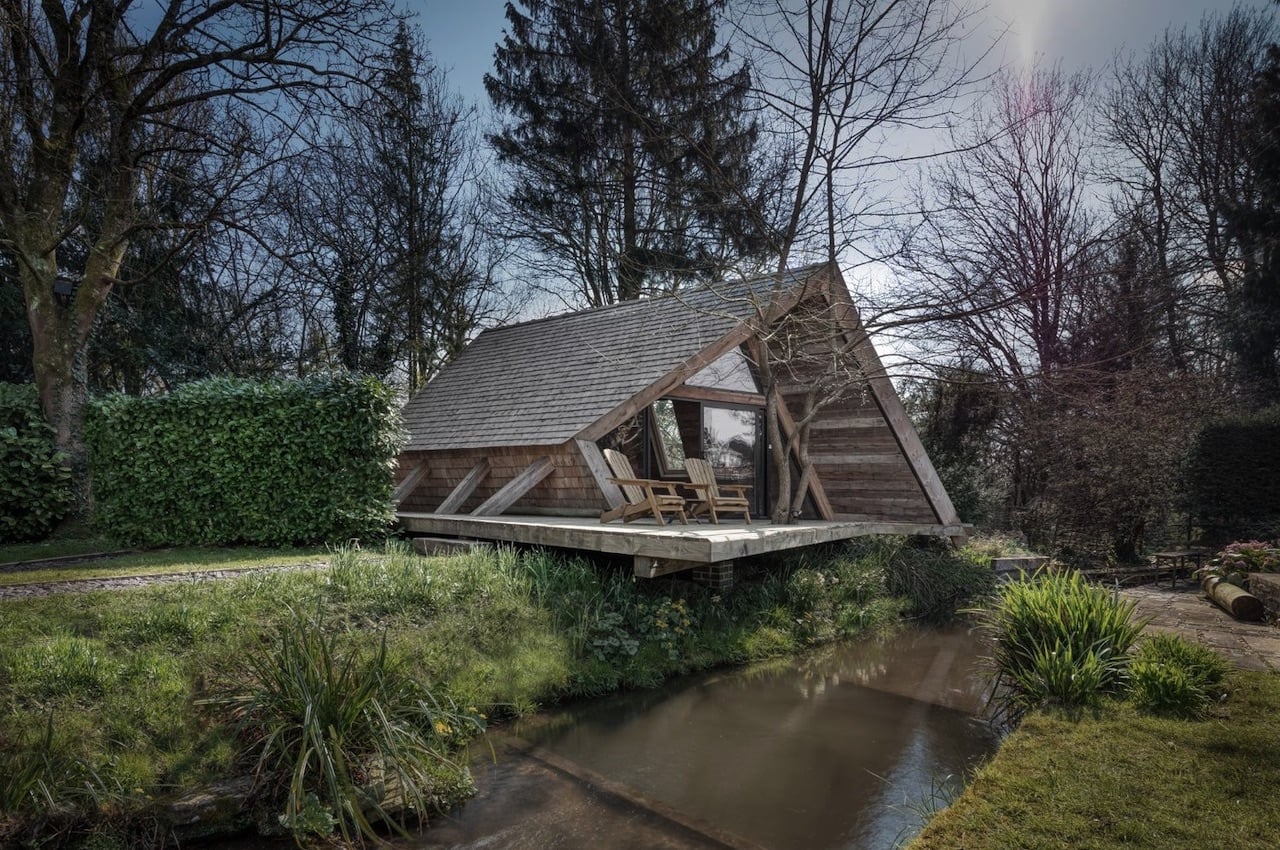
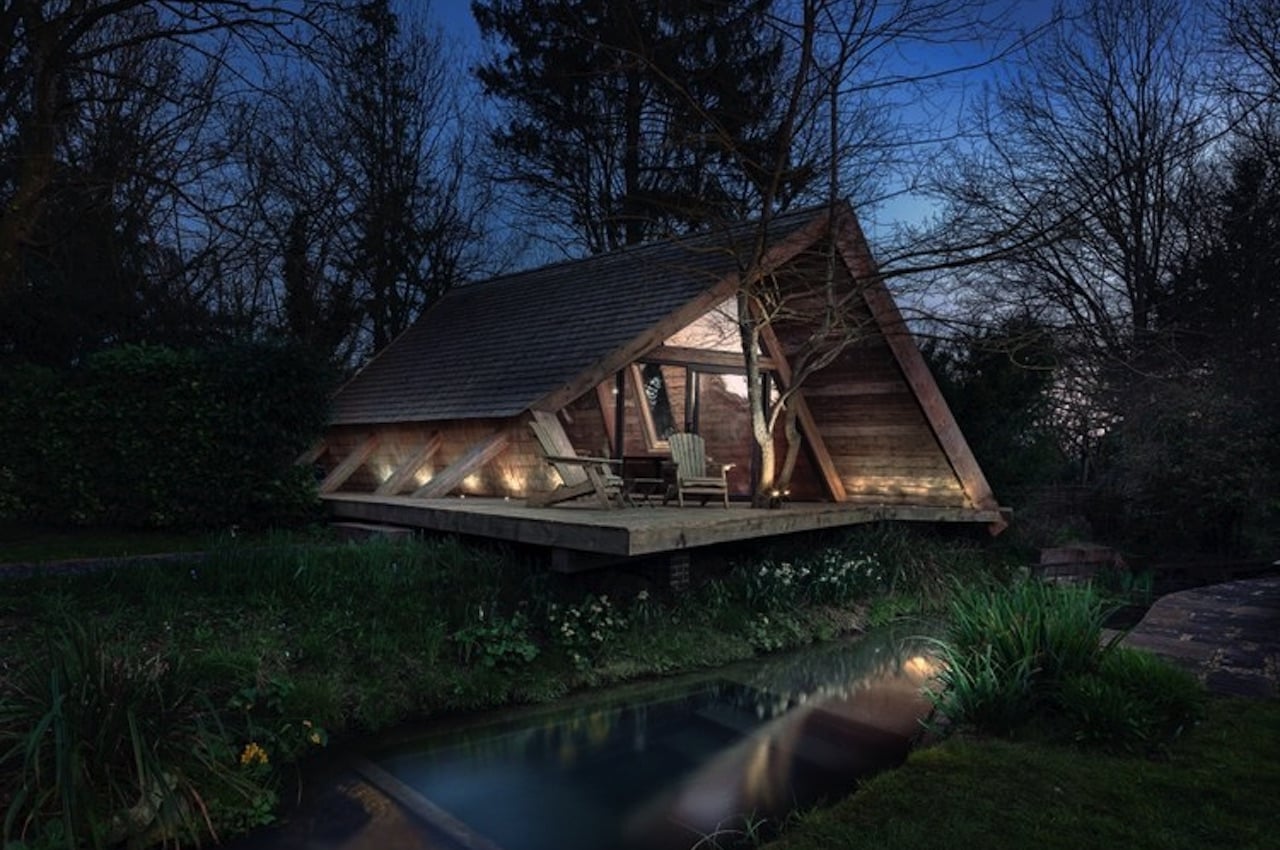
We have seen several interesting units, but we believe more well-designed cabins will be introduced. The latest on our radar is The Climber’s Cabin by AR Design Studio. As described, its primary purpose is as a space for children and as a guest cabin for when you want to entertain friends and family.
Why is it noteworthy?
The Climber’s Cabin is situated near a stream and a woodland, adding to the adventure experience. The initial plan for the cabin was for it to function as an ancillary space for the client’s house. The idea was that the cabin would be built quickly without any complex construction methods. Every step was supposed to be straightforward, so anyone could easily understand and follow. Construction should also be done using sustainable materials sourced locally. The project was actually born during those early months of lockdowns due to the pandemic.
What we like
- The A-shaped roof was optimized to allow a mezzanine
- Inside The Climber’s Cabin, interior finishes are made of used and upcycled boards
What we dislike
- The exterior comes in one style, not customisable.
10. Tind
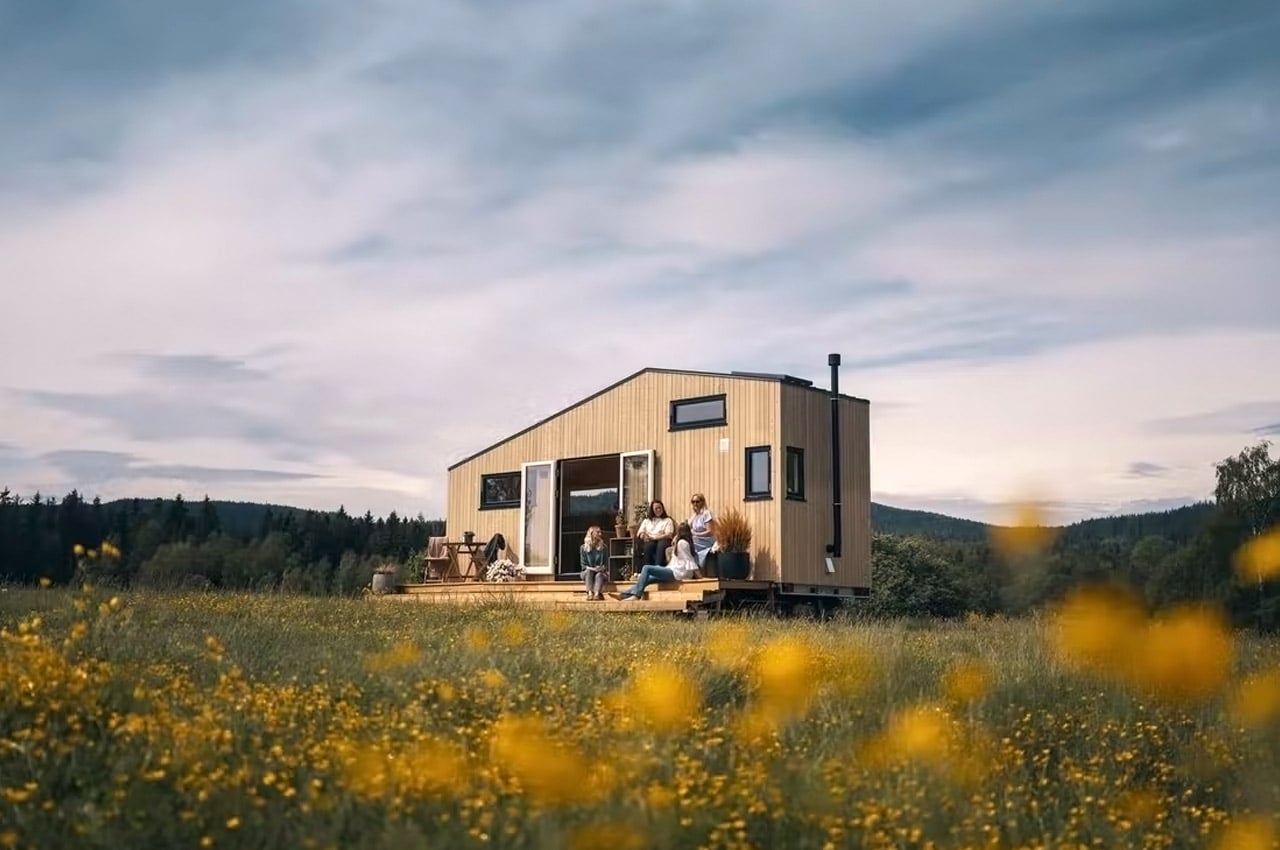
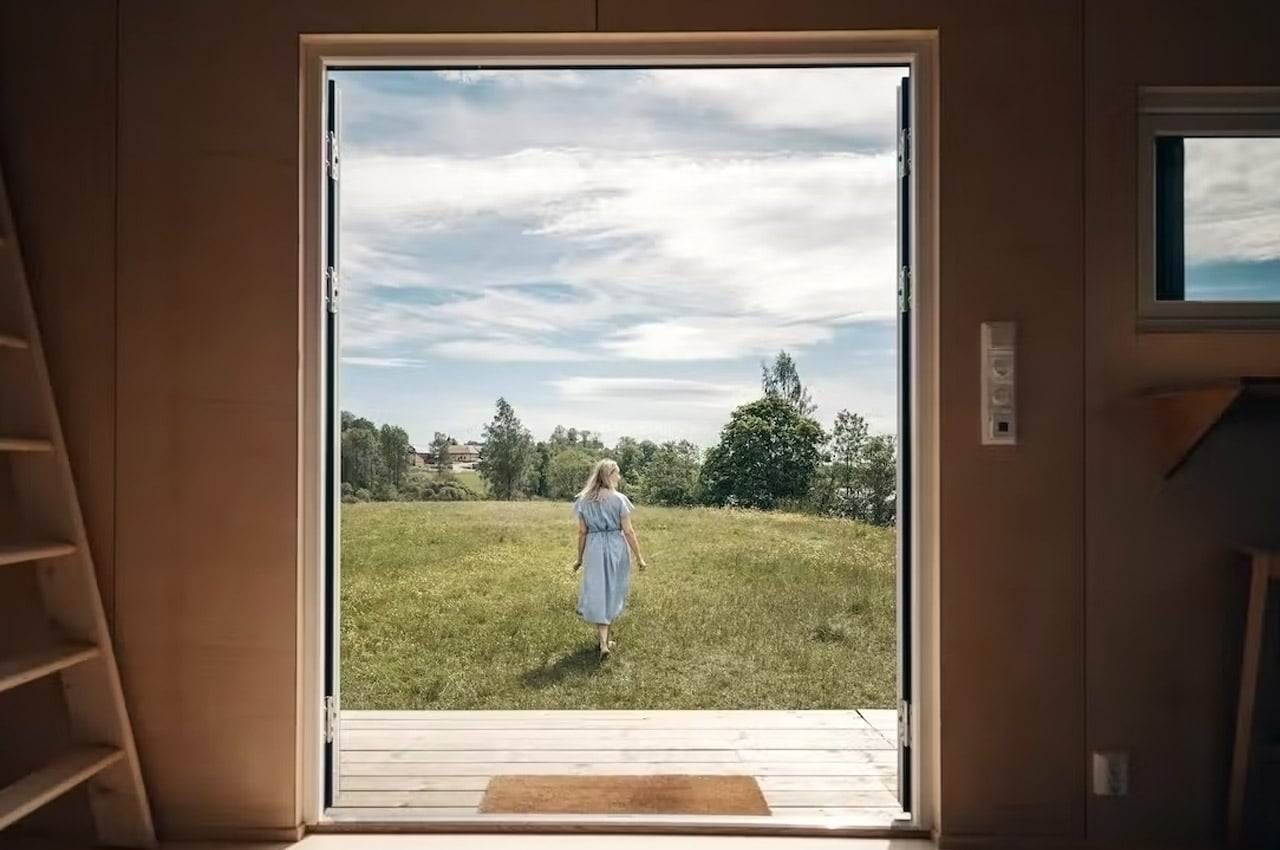
David and Jeanette Reiss-Andersen, cofounders of the Oslo-based tiny home company Norske Mikrohus, decided to build an eco-friendly and affordable alternative to the pricier standard-size homes available on the market.
Why is it noteworthy?
Measuring 70 square feet, Tind is a tiny home on wheels, that draws inspiration from the forests and mountains of Norway. It’s also clad completely in Norwegian spruce, making it a sustainable little house. Not only the exterior but the interior of the home is also clad in wood – birch veneer to be specific, giving the space a very modern, natural, and warm vibe.
What we like
- A compact built-in wooden counter in the open-plan kitchen also serves as an efficient home office
- There’s also a walk-in closet, which isn’t seen in most tiny homes
What we dislike
- Muted/Minimalistic look is great but does not allow for great customisation




